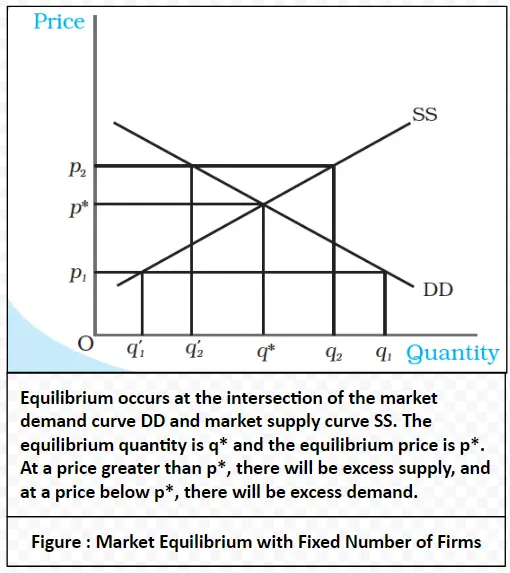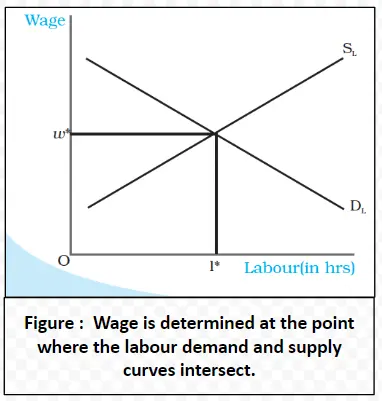![]() 30 Nov 2023
30 Nov 2023
In this chapter, a combination of consumer and firm is used to analyze market equilibrium through demand and supply analysis. The price at which equilibrium occurs will be determined and the impacts of shifts in demand and supply on this equilibrium will be investigated. Additionally, Practical applications of demand and supply analysis will be examined.
Individual demand curves: It shows how much a consumer is willing to buy at different prices.
The market demand curve: It shows the total quantity consumers are willing to purchase at various prices.
Individual firm supply curves: It indicates how much a profit-maximising firm wants to sell at different prices.
The market supply curve: It reflects the total quantity all firms wish to supply at various prices.
qD(p*)= qS(p*)
where p* is the equilibrium price, and qD(p*) and qS(p*) represent market demand and market supply at price p*.

Let us consider the example of a market consisting of identical farms producing the same quality of wheat,
Example: Suppose the market equilibrium demand curve and the market supply curve for wheat are given by: qD = 200 – p for 0 ≤p ≤200 = 0 for p > 200 qS = 120 + p for p ≥ 10 = 0 for 0 ≤ p < 10 Where qD and qS denote the demand for and supply of wheat (in kg) respectively and p denotes the price of wheat per kg in rupees. Since at market equilibrium price clear, we find the equilibrium price (denoted by p*) by equating market demand and supply and solve for p*. qD(p*) = qS(p*) 200 – p* = 120 + p* Rearranging terms, 2p* = 80 p* = 40 Therefore, the equilibrium price of wheat is Rs 40 per kg. The equilibrium quantity (denoted by q*) is obtained by substituting the equilibrium price into either the demand or the supply curve’s equation since in equilibrium quantity demanded and supplied are equal. qD = q* = 200 – 40 = 160 Alternatively, qS = q* = 120 + 40 = 160 Thus, the equilibrium quantity is 160 kg. At a price less than p*, say p1 = 25 qD = 200 – 25 = 175 qS = 120 + 25 = 145 Therefore, at p1 = 25, qD > qS which implies that there is excess demand at this price. Algebraically, excess demand (ED) can be expressed as ED(p) = qD – qS = 200 – p – (120 + p) = 80 – 2p Notice from the above expression that for any price less than p*(= 40), excess demand will be positive. Similarly, at a price greater than p*, say p2 = 45 qD = 200 – 45 = 155 qS = 120 + 45 = 165 Therefore, there is excess supply at this price since qS > qD. Algebraically, excess supply (ES) can be expressed as ES(p) = qS – qD = 120 + p – (200 – p) = 2p – 80 Notice from the above expression that for any price greater than p*(= 40), excess supply will be positive. Therefore, at any price greater than p*, there will be excess supply, and at any price lower than p*, there will be excess demand.
Wage Determination: Balancing Labor Supply and Demand for Market Equilibrium
w = MRPL
and MRPL = MR × MPL

<div class="new-fform">
</div>